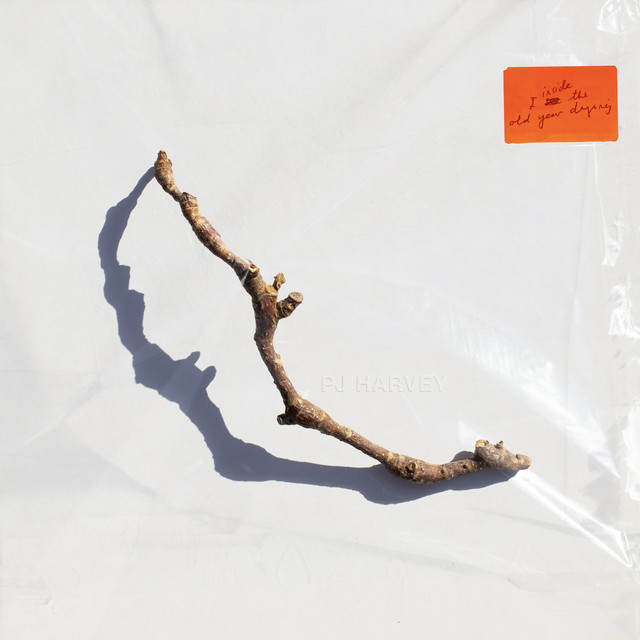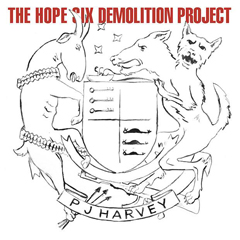MOST READ
- interview with xiexie オルタナティヴ・ロック・バンド、xiexie(シエシエ)が実現する夢物語
- Chip Wickham ──UKジャズ・シーンを支えるひとり、チップ・ウィッカムの日本独自企画盤が登場
- Natalie Beridze - Of Which One Knows | ナタリー・ベリツェ
- 『アンビエントへ、レアグルーヴからの回答』
- interview with Martin Terefe (London Brew) 『ビッチェズ・ブリュー』50周年を祝福するセッション | シャバカ・ハッチングス、ヌバイア・ガルシアら12名による白熱の再解釈
- VINYL GOES AROUND PRESSING ──国内4か所目となるアナログ・レコード・プレス工場が本格稼働、受注・生産を開始
- Loula Yorke - speak, thou vast and venerable head / Loula Yorke - Volta | ルーラ・ヨーク
- interview with Chip Wickham いかにも英国的なモダン・ジャズの労作 | サックス/フルート奏者チップ・ウィッカム、インタヴュー
- interview with salute ハウス・ミュージックはどんどん大きくなる | サルート、インタヴュー
- Kim Gordon and YoshimiO Duo ──キム・ゴードンとYoshimiOによるデュオ・ライヴが実現、山本精一も出演
- Actress - Statik | アクトレス
- Cornelius 30th Anniversary Set - @東京ガーデンシアター
- 小山田米呂
- R.I.P. Damo Suzuki 追悼:ダモ鈴木
- Black Decelerant - Reflections Vol 2: Black Decelerant | ブラック・ディセレラント
- Columns ♯7:雨降りだから(プリンスと)Pファンクでも勉強しよう
- Columns 6月のジャズ Jazz in June 2024
- Terry Riley ——テリー・ライリーの名作「In C」、誕生60年を迎え15年ぶりに演奏
- Mighty Ryeders ──レアグルーヴ史に名高いマイティ・ライダース、オリジナル7インチの発売を記念したTシャツが登場
- Adrian Sherwood presents Dub Sessions 2024 いつまでも見れると思うな、御大ホレス・アンディと偉大なるクリエイション・レベル、エイドリアン・シャーウッドが集結するダブの最強ナイト
Home > Reviews > Album Reviews > PJ Harvey- I Inside The Old Year Dying

PJハーヴェイのいくつもの声
2001年、PJハーヴェイはロックの女神としての絶頂期を迎えていた。前年にリリースされた『Stories from the City, Stories from the Sea』は、これまででもっとも洗練された、理解を得やすいアルバムとなり、1998年の緊張感をはらんだ『Is This Desire?』でつきまとわれた暗い噂を一掃するような自信に満ちた一撃となった。その年の9月にマンチェスター・アポロでのハーヴェイのライヴを観たのは、彼女がマーキュリー賞を受賞してから数週間後のことで、私がこれまでに観た最高のロック・ギグのひとつとなった。ラジオ向きの、煌びやかな加工がされていない “This Is Love” や “Big Exit” のような曲は、より記念碑的に響き、まるで彼女がブルース・ロックの原始的な真髄にまで踏み込み、マッチョ的な要素や、陳腐なエリック・クラプトンのような、このジャンルにありがちなものすべてが刈り取られたかのようだった。
だが、そのショウは、ほとんどウィスパーといえるほどの小声で始まった。ハーヴェイは単独でステージに上がり、ヤマハの QY20 でのハーモニウム風の伴奏に合わせ、子どものような、物悲しいメロディを歌った。私はその曲を判別できなかったが、サビのコーラスに差しかかると、客席でクスクス笑いが起こった。バブルガム・ポップのグループ、ミドル・オブ・ザ・ロードの1970年のヒット曲 “チピ・チピ天国” の有名なリフレイン「Where’s your mama gone? (あなたのママはどこへ行ったの?)」をとりあげたからだ。ポリー・ジーンにはユーモアのセンスが欠如しているなんて、誰にも言わせない。
昨年リリースされたコンピレーション『B-Sides, Demos & Rarities』を聴くまで、このことはすっかり忘れていた。“Nina in Ecstasy 2” は、『Is This Desire?』のセッションで録音され、結果的には「The Wind」のB面としてリリースされたものだ。当時は珍品のように見做されていたに違いないが、この曲はハーヴェイの、その後のキャリアの方向性を示す初期におけるヒントだったのではないかと思い当たった。この曲で使われた、浮遊感のある、ほとんど肉体から切り離されたような儚い高音域の声は、2007年の『White Chalk』や、2011年の『Let England Shake』などのアルバムで再び使われた種類の声だ。さらに、今年の『I Inside the Old Year Dying』でも聴くことができる。この作品をハーヴェイのフォーク・アルバムと呼びたい衝動にかられるものの、それは、私がこれまでにまったく聴いたことのないフォーク・ミュージックなのだった。
熟練したアーティストが、自分の強みを離れたところで新たな挑戦をするのには、いつだって心惹かれる。彼女のレコード・レーベルにとってみれば、『Stories from the City, ~』の路線を継承し、クリッシー・ハインド2.0へと変化を遂げてほしかったことだろう。だが、彼女は2004年に、セルフ・プロデュースしたラフな感じを楽しむようなアルバム『Uh Huh Her』 を発表した。アートワークは、セルフィ(自撮り写真)と自分用のメモをコラージュしたもので、そのひとつには、「普通すぎる? PJHすぎる?」との文字があり、彼女の創作過程を垣間見ることができる。「曲で悩んだら、いちばん好きなものを捨てる」という一文は、ブライアン・イーノとペーター・シュミットの「オブリーク・ストラテジーズ」のカードからの引用ではないかとググってしまったほどだ。
ハーヴェイにとって「いちばん好きなもの」とは、彼女自身の声、あるいは少なくとも彼女の初期のアルバムで定義づけられた生々しい、声高な叫びを意味するのではないか。それは、驚くべき楽器だ。1992年のデビュー作『Dry』のオープニング・トラック “Oh My Lover” を聴いてみてほしい。歌詞はかなり曖昧なトーンで書かれているのに、彼女の歌声には驚くべき自信とパワーが漲っている。このアルバムと、それに続く1993年のスティーヴ・アルビニによる録音の『Rid of Me』にとって効果的だったことのひとつは、荒涼としたパンク・ブルースのおかげで、ヴォーカルに多くのスペースが割り当てられたことだった。ハーヴェイの喉の方が、当時のグランジ系が好んで使用したディストーションの壁よりも、より強力だったのだ。1995年の豊穣なゴシック調の『To Bring You My Love』では、彼女は自分の声をさらに先へと押し出し、BBCスタジオでの “The Dancer” のパフォーマンスでは、ディアマンダ・ガラスとチャネリングしているかのように聴こえたし、そう見えた。実際に彼女は自身の声の形を変える実験も始めていた。最近のNPRとのインタヴューでは、プロデューサーのフラッドに、閉所恐怖症的な “Working for the Man” の録音の際、毛布をかぶされ、マイクを喉に貼りつけて歌わされたことを回想している。
10枚のソロ・アルバムと、長年のコラボレイターであるジョン・パリッシュとのデュオ・アルバム2枚というハーヴェイのディスコグラフィを貫く共通項は、おそらく、頑なに繰り返しを拒んできたことだろう。多くのアーティストが同じことを主張しがちだが、ハーヴェイは暴力的なほどの意志の強さでこれを貫き、デイヴィッド・ボウイと匹敵するほど、自分をコンフォート・ゾーン外に意図的に追いやってきた。『White Chalk』では、ギターを、ほとんど弾くことのできないピアノに替え、元来の声域外で歌った(彼女は当時のKCRWラジオのインタヴューで「多分、自分が得意なことをやりたくなかっただけ」と語っている)。歌詞においても、それまでの自分には、手に負えないだろうと思うようなテーマに努力して取り組んでいる。『Let England Shake』は主にオートハープを使って作曲されたが、第一次世界大戦の歴史を考慮に入れて、自らをある種の戦争桂冠詩人に変身させた。2016年の『The Hope Six Demolition Project』 では、写真家のシェイマス・マーフィーと世界中を旅した経験から、現代政治と外交政策の意味を探ろうと試みた。
『I Inside the Old Year Dying』は、もうひとつの、ドラマティックな変化を示している。この作品は、2022年に出版された、彼女の生まれ故郷のドーセット地方の方言で書かれた長編の詩集『Orlam』が進化したもので、歌詞カードには、曲を彩る難解な言い回しの意味の説明の脚注が付いている。「wilder-mist(窓にかかった蒸気)」、「hiessen(不吉な予感)」、「femboy(フェムボーイ=少女のような少年)」、「bedraggled angels(濡れた羊)」などだ。それらの言葉の馴染みのなさは、音楽にも反映され、音楽の元の素材から連想できるようなフォークの作風は意識的に避けられている。ハーヴェイはこのアルバムを、パリッシュとフラッドというもっとも信頼するふたりのコラボレイターに加え、フィールド・レコーディングをリアルタイムで操作した若手のプロデューサー、アダム・バートレット(別名セシルとして知られる)と共に制作した。フラッドは、より伝統的な楽器編成を古風なシンセサイザーで補い、「sonic disturbance(音波の攪乱)」としてもクレジットされている。これは、温かいが、尋常ではない響きのアルバムであり、ハーヴェイの成熟した作品を定義するようになった、どこにも分類することのできないクオリティを保っている。この音楽は、時間や場所を超えて存在するようなものではあるが、彼女にしか創り得なかったものなのである。
The many voices of PJ Harvey
written by James Hadfield
In 2001, PJ Harvey was at the peak of her rock goddess phase. “Stories from the City, Stories from the Sea,” released the previous year, had presented her slickest, most accessible album to date – a confident blast to dispel all the dark rumours that had accompanied 1998’s fraught “Is This Desire?”. The show I saw her play at the Manchester Apollo that September, just weeks after winning the Mercury Music Prize, was one of the best rock gigs I’ve ever seen. Without their radio-friendly production gloss, songs like “This Is Love” and “Big Exit” sounded even more monumental, as if she was tapping into some primal essence of blues rock, shorn of all the macho, Eric Clapton cliches you’d normally associate with the genre.
Yet the show had started almost at a whisper. Harvey took the stage alone and sang a plaintive, childlike melody, over a harmonium-style accompaniment played on a Yamaha QY20. I didn’t recognise the song, but when she reached the chorus, a chuckle rose from the audience: she’d lifted the “Where’s your mama gone?” refrain from “Chirpy Chirpy Cheep Cheep ,” a 1970 chart hit by bubblegum pop act Middle of the Road. Let nobody say that Polly Jean doesn’t have a sense of humour.
I’d forgotten about this until I heard the song again on the “B-Sides, Demos & Rarities” compilation, released last year. “Nina in Ecstasy 2” was recorded during the sessions for “Is This Desire?” and ended up getting released as a B-side to “The Wind.” It must have seemed like a curio at the time, but in retrospect it strikes me as an early hint of where Harvey would head later in her career. The voice she used on that song – floating, almost disembodied, delivered in a fragile higher register – is one that she would return to on albums such as 2007’s “White Chalk” and 2011’s “Let England Shake.” You can hear it again on this year’s “I Inside the Old Year Dying,” which I’m tempted to call PJ Harvey’s folk album, except that it doesn’t sound like any folk music I’ve heard before.
It’s always striking to hear an accomplished artist play against their strengths. Harvey’s record label probably would have loved her to continue on the trajectory of “Stories from the City…,” morphing into Chrissie Hynde 2.0. Instead, she delivered 2004’s rough, self-produced “Uh Huh Her,” an album that seemed to revel in its imperfections. The artwork, a collage of selfies and notes-to-self, offered glimpses into her creative process. “Too normal? Too PJH?” reads one of the notes. “If struggling with a song, drop out the thing you like the most,” reads another – a quote that I had to Google to check it wasn’t actually from Brian Eno and Peter Schmidt’s Oblique Strategies cards.
For Harvey, “the thing you like the most” can mean her own voice – or at least the raw, full-throated holler that defined her earlier albums. It’s a formidable instrument: just listen to “Oh My Lover,” the opening track on her 1992 debut, “Dry.” There’s a startling confidence and power in her delivery, even as the lyrics strike a more ambiguous tone. Part of what made that album and its 1993 follow-up, the Steve Albini-recorded “Rid of Me,” so effective was that their stark punk-blues left so much space for the vocals. Harvey’s larynx was more powerful than the walls of distortion favoured by her grunge contemporaries. On 1995’s lushly gothic “To Bring You My Love,” she pushed her voice even further: in a BBC studio performance of “The Dancer,” she sounds – and looks – like she’s channelling Diamanda Galas. But she had also begun to experiment with altering the shape of her voice. In a recent interview with NPR, she recalled that producer Flood recorded the claustrophobic “Working for the Man” by getting her to sing under a blanket with a microphone taped to her throat.
If there’s a common thread running through Harvey’s discography – 10 solo albums, as well as two released as a duo with longtime collaborator John Parish – it’s a stubborn refusal to repeat herself. Plenty of artists claim to do this, but Harvey has shown a bloody-mindedness to rival David Bowie, deliberately forcing herself out of her comfort zone. For “White Chalk,” she switched from guitar to piano – an instrument she could barely play – and sang outside her natural vocal range. (“I just didn’t want to do what I know I’m good at, I guess,” she told an interviewer on KCRW radio at the time.) Lyrically, too, she has made a deliberate effort to engage with themes that had seemed out of her grasp. “Let England Shake” – written mostly on autoharp – found her transformed into a kind of war laureate, reckoning with the history of World War I. 2016’s “The Hope Six Demolition Project” attempted to make sense of modern politics and foreign policy, based on her experiences travelling around the world with photographer Seamus Murphy.
“I Inside the Old Year Dying” marks another dramatic shift. It evolved from “Orlam,” a book-length poem that Harvey published in 2022, written in the dialect of her native county, Dorset. The lyric sheet comes with footnotes explaining the meanings of the arcane terms that pepper the songs: “wilder-mist” (steam on a window), “hiessen” (a prediction of evil), “femboy” (a girly guy), “bedraggled angels” (wet sheep). The unfamiliarity of the language is mirrored by the music, which consciously avoids the folk idioms which the material would seem to encourage. Harvey created the album with Parish and Flood, two of her most trusted collaborators, along with the younger producer Adam Bartlett (otherwise known as Cecil), who supplied field recordings that were manipulated in real-time. Flood complemented the more traditional instrumentation with archaic synthesisers, and is also credited for “sonic disturbance.” It’s a warm but also uncanny-sounding album, with an unplaceable quality that has come to define Harvey’s mature work. It’s music that seems to exist out of time, out of place, but could only have been created by her.
ジェイムズ・ハッドフィールド
ALBUM REVIEWS
- Loula Yorke - speak, thou vast and venerable head/ Loula Yorke - Volta
- Actress - Statik
- Black Decelerant - Reflections Vol 2: Black Decelerant
- High Llamas - Hey Panda
- The Stalin - Fish Inn - 40th Anniversary Edition -
- KRM & KMRU - Disconnect
- Cornelius - Ethereal Essence
- Kronos Quartet & Friends Meet Sun Ra - Outer Spaceways Incorporated
- Martha Skye Murphy - Um
- Mouchoir Étanche - Le Jazz Homme
- Taylor Deupree - Sti.ll
- John Cale - POPtical Illusion
- Amen Dunes - Death Jokes
- A. G. Cook - Britpop
- James Hoff - Shadows Lifted from Invisible Hands


 DOMMUNE
DOMMUNE


